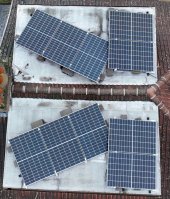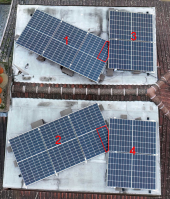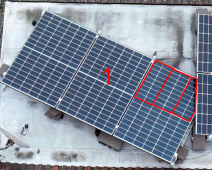I attach photos of a recent solar install. I would be very grateful for comments -- and possible suggestions for suggested optimisations -- on the panel placement and workmanship.
Location is Scotland (latitude 56 degrees).
Concerning orientation: in the photo "above.jpeg", North-to-South is left-to-right.
Numbering the panels 1 (northeast / top-left in the photo "above.jpeg"), 2 (northwest / bottom-left), 3 (southeast / top-right), 4 (southwest / bottom-right), as per sunshine_eggo's response, the panels are on two parallel string inverters with numbers 1 and 3 in series, and 2 and 4 in series (by my understanding).
Thanks in advance.
Location is Scotland (latitude 56 degrees).
Concerning orientation: in the photo "above.jpeg", North-to-South is left-to-right.
Numbering the panels 1 (northeast / top-left in the photo "above.jpeg"), 2 (northwest / bottom-left), 3 (southeast / top-right), 4 (southwest / bottom-right), as per sunshine_eggo's response, the panels are on two parallel string inverters with numbers 1 and 3 in series, and 2 and 4 in series (by my understanding).
Thanks in advance.
Attachments
Last edited:







